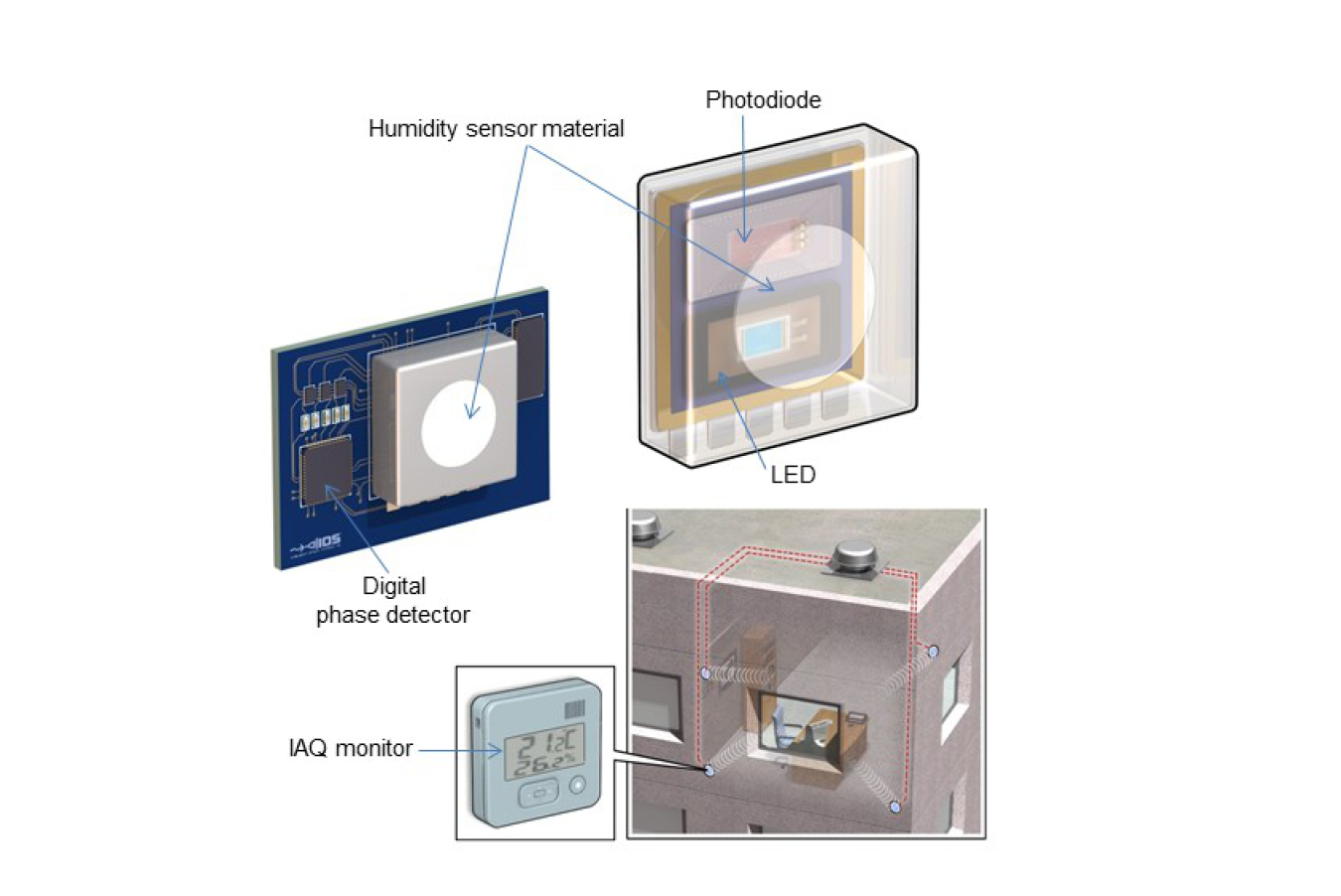In this SBIR phase II project, Intelligent Optical Systems is developing a humidity sensor whose accuracy does not appreciably degrade over time.
October 27, 2017
Lead Performer: Intelligent Optical Systems Inc. – Torrance, CA
DOE Total Funding: $999,982
Project Term: June 2016 – June 2019
Funding Type: Small Business Innovation Research Phase II Release 2
Project Objective
The long-term accuracy of current state-of-the-art humidity sensors is limited due to contamination of the sensing medium over time. This can affect the indoor air quality in buildings and lead to unnecessary energy consumption to maintain suitable occupant comfort requirements. Hydrophilic metal oxides have proven, for example, to be extremely effective but retain water over time and exhibit structural changes that result in signal drift. The investigation and tuning of novel materials and their interfacial properties can address this limitation. Intelligent Optical Systems Inc. is exploring one of these pathways by investigating hydrophobic materials doped with humidity sensitive indicator dye to develop optical sensors as a cost-effective approach that will address long-term stability.
Contacts
DOE Technology Manager: Erika Gupta
Lead Performer: Jesús Delgado-Alonso, Intelligent Optical Systems Inc.

